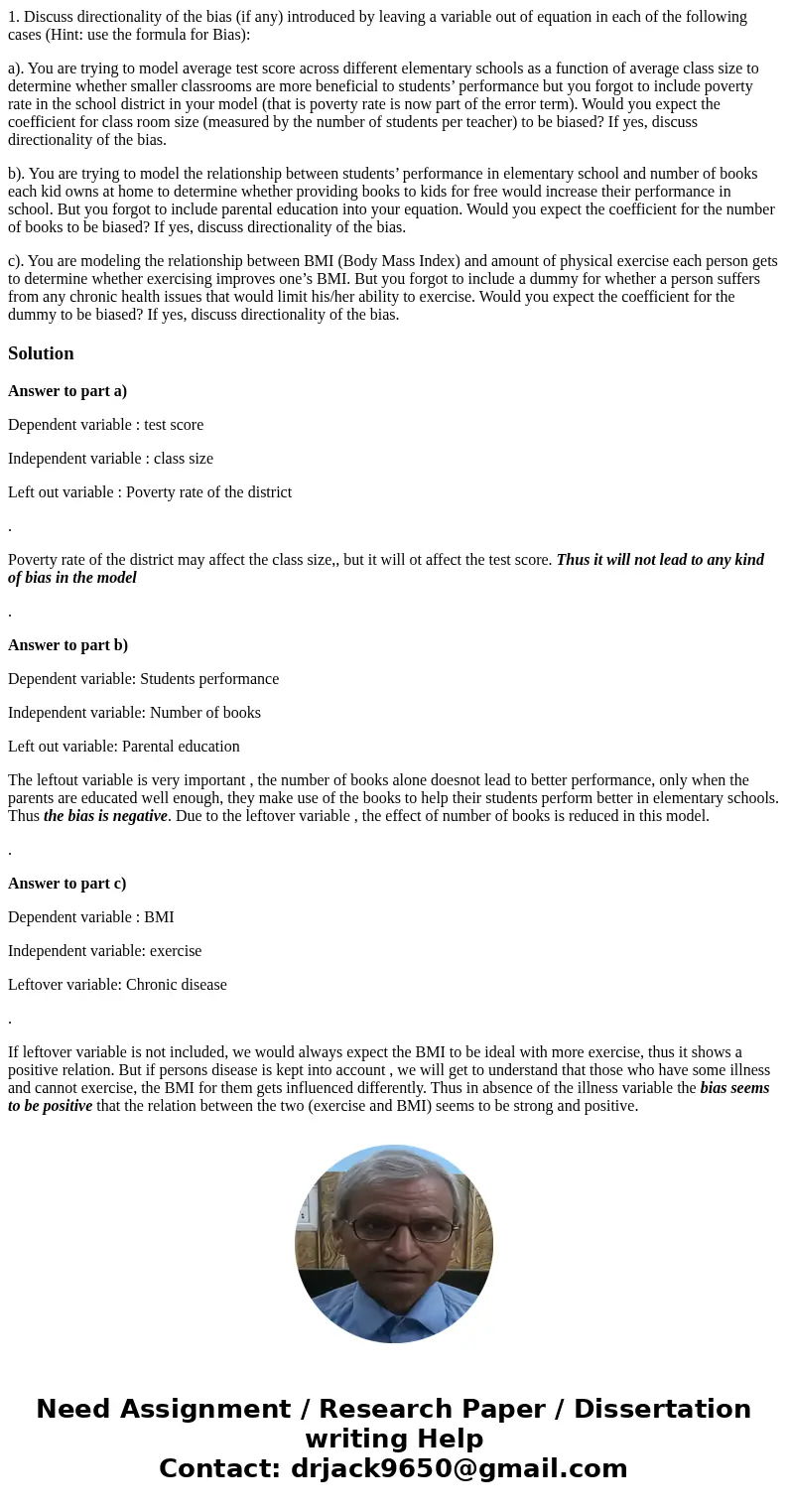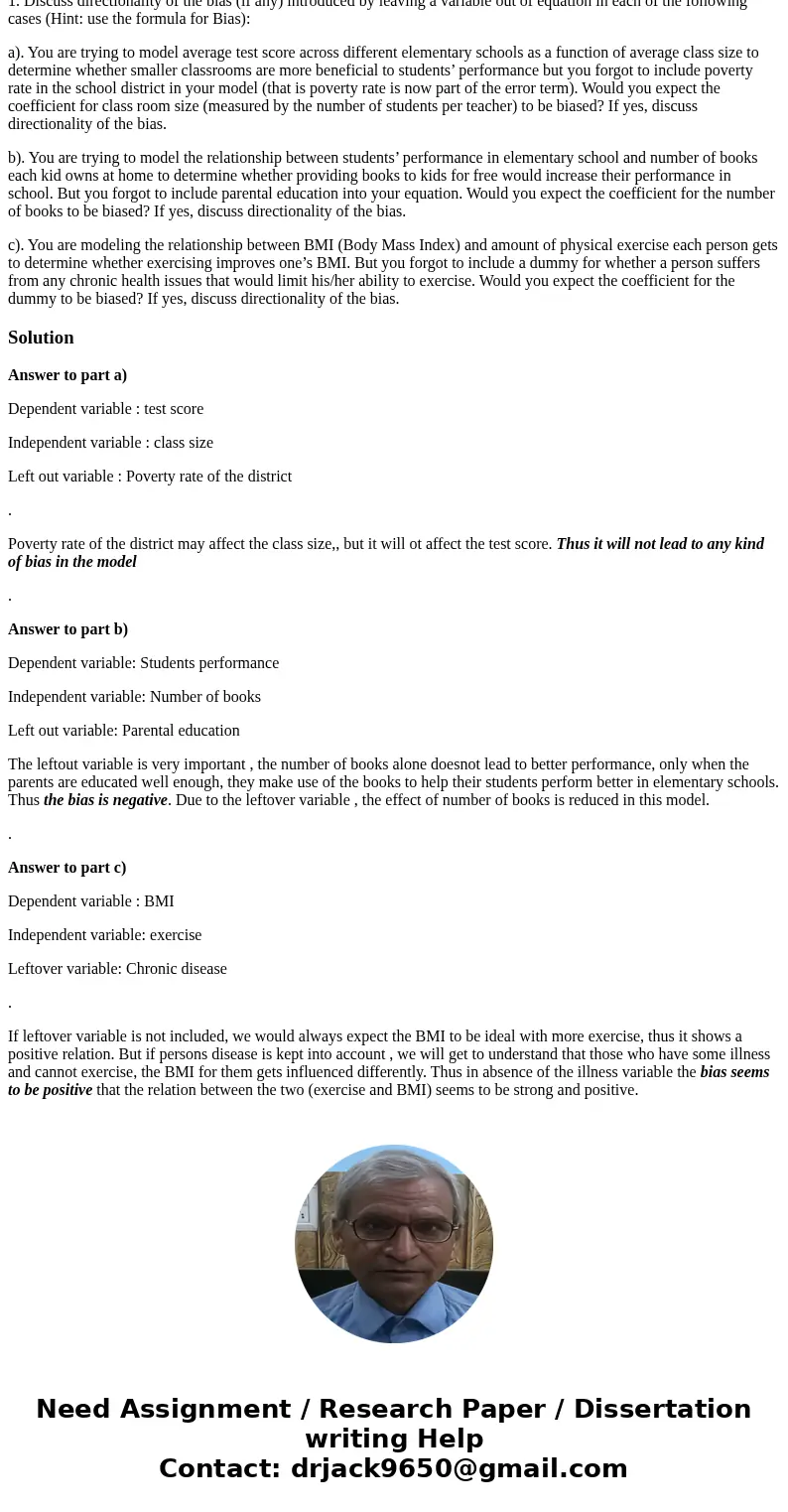1 Discuss directionality of the bias if any introduced by le
1. Discuss directionality of the bias (if any) introduced by leaving a variable out of equation in each of the following cases (Hint: use the formula for Bias):
a). You are trying to model average test score across different elementary schools as a function of average class size to determine whether smaller classrooms are more beneficial to students’ performance but you forgot to include poverty rate in the school district in your model (that is poverty rate is now part of the error term). Would you expect the coefficient for class room size (measured by the number of students per teacher) to be biased? If yes, discuss directionality of the bias.
b). You are trying to model the relationship between students’ performance in elementary school and number of books each kid owns at home to determine whether providing books to kids for free would increase their performance in school. But you forgot to include parental education into your equation. Would you expect the coefficient for the number of books to be biased? If yes, discuss directionality of the bias.
c). You are modeling the relationship between BMI (Body Mass Index) and amount of physical exercise each person gets to determine whether exercising improves one’s BMI. But you forgot to include a dummy for whether a person suffers from any chronic health issues that would limit his/her ability to exercise. Would you expect the coefficient for the dummy to be biased? If yes, discuss directionality of the bias.
Solution
Answer to part a)
Dependent variable : test score
Independent variable : class size
Left out variable : Poverty rate of the district
.
Poverty rate of the district may affect the class size,, but it will ot affect the test score. Thus it will not lead to any kind of bias in the model
.
Answer to part b)
Dependent variable: Students performance
Independent variable: Number of books
Left out variable: Parental education
The leftout variable is very important , the number of books alone doesnot lead to better performance, only when the parents are educated well enough, they make use of the books to help their students perform better in elementary schools. Thus the bias is negative. Due to the leftover variable , the effect of number of books is reduced in this model.
.
Answer to part c)
Dependent variable : BMI
Independent variable: exercise
Leftover variable: Chronic disease
.
If leftover variable is not included, we would always expect the BMI to be ideal with more exercise, thus it shows a positive relation. But if persons disease is kept into account , we will get to understand that those who have some illness and cannot exercise, the BMI for them gets influenced differently. Thus in absence of the illness variable the bias seems to be positive that the relation between the two (exercise and BMI) seems to be strong and positive.


 Homework Sourse
Homework Sourse